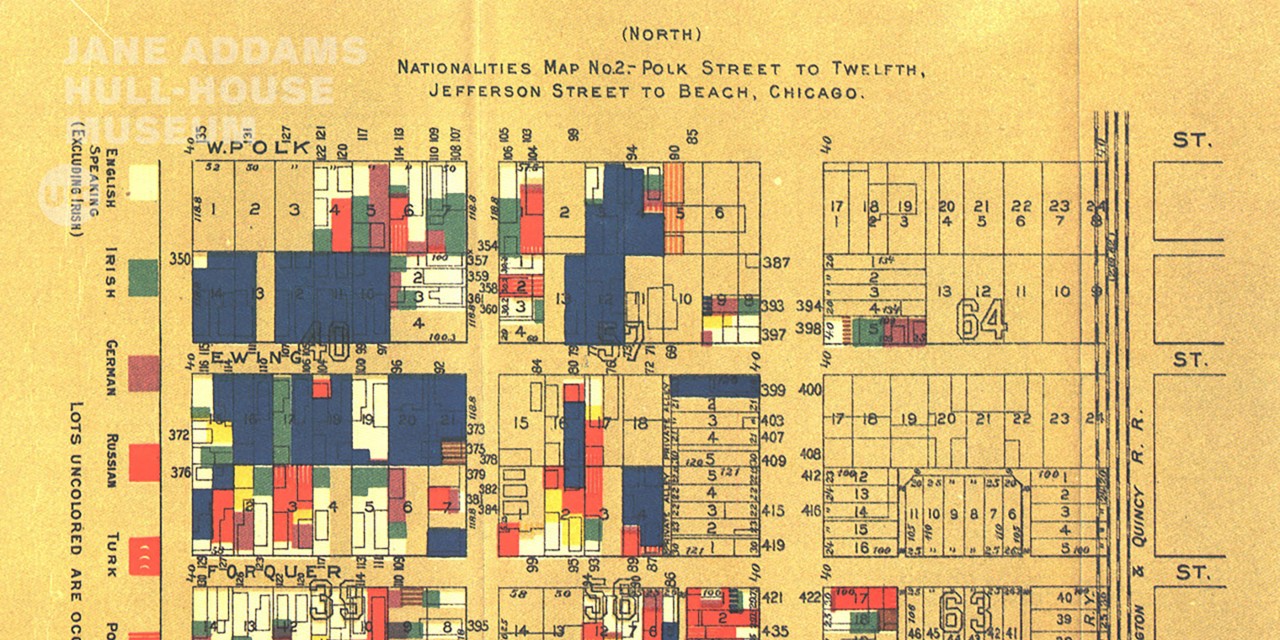Report on the Climate Change Quilt Initiative and its Alignment with Sustainable Development Goals
Introduction: An Artistic Initiative for Sustainable Development
Binghamton University, through the work of Professor and Chief Sustainability Officer Pam Mischen, has launched the Climate Change Quilt project. This initiative utilizes art as a medium to elevate the national dialogue on climate change, directly addressing the core tenets of SDG 13: Climate Action. The project seeks to create a tangible, visible representation of a critical global issue that often lacks consistent public attention.
Project Rationale and Strategic Alignment with SDGs
Addressing a Gap in Public Discourse and Fostering Climate Action (SDG 13)
The project was conceived in response to the perceived lack of visibility and public discourse surrounding climate change. It aims to activate the 73% of American adults who, according to the Yale Program on Climate Change Communication, understand that climate change is happening but may not be actively engaged in solutions. By creating a compelling visual narrative, the initiative works to foster the widespread action necessary to achieve the targets of SDG 13.
A Model of Inclusive Partnership and Community Engagement
Inspired by the AIDS Quilt Project, the Climate Change Quilt leverages a communal and inclusive art form to engage diverse populations, thereby supporting several SDGs:
- SDG 11: Sustainable Cities and Communities: The project strengthens community bonds by bringing together over 200 local participants from various backgrounds, including university members, retirees, and community groups, through workshops at local museums and outreach events.
- SDG 17: Partnerships for the Goals: It exemplifies a multi-stakeholder partnership involving academia, cultural institutions (Roberson Museum), and civic organizations (rotary clubs) to achieve a common sustainability goal.
- SDG 10: Reduced Inequalities: Quilting is presented as a medium that crosses socioeconomic and cultural divides, ensuring that voices from traditionally underrepresented groups, such as rural populations, are included in the climate conversation.
Promoting Responsible Consumption and Production (SDG 12)
The project’s methodology is intrinsically linked to principles of sustainability. The traditional use of leftover fabric scraps to create quilts is a direct application of upcycling, turning potential waste into a functional and meaningful product. This practice promotes the ideals of SDG 12: Responsible Consumption and Production. One quilt specifically highlights the issue of plastic waste, noting that only 9% of the one million plastic bottles purchased globally every minute is recycled, underscoring the urgent need for improved consumption patterns and waste management systems.
Thematic Focus on Global Goals
Depicting the Human Impact of Climate Change
The quilts serve as educational tools that visualize the severe consequences of climate change, connecting the project to a range of interconnected SDGs:
- SDG 2: Zero Hunger: One quilt depicts how climate-induced drought and changing monsoon patterns threaten critical agricultural zones, potentially leading to a 25% drop in global food production by the end of the century.
- SDG 3: Good Health and Well-being: The project implicitly addresses public health by raising awareness of a crisis projected to cause 3.4 million deaths annually if left unabated.
- SDG 10: Reduced Inequalities & SDG 11: Sustainable Cities and Communities: A quilt focused on climate migration illustrates the displacement of communities due to sea-level rise, extreme weather, and desertification, highlighting the disproportionate impact on vulnerable populations.
Education and Advocacy for Climate Action (SDG 4 & SDG 13)
The initiative functions as a powerful form of public education, aligning with SDG 4: Quality Education. By translating complex data and future projections into accessible visual stories, the quilts aim to bridge the gap between awareness and action. The project’s goal is not to convince skeptics but to mobilize the majority who understand the threat but are unsure how to contribute to achieving SDG 13.
Strategic Objectives and National Expansion
Building a National Coalition for the Goals (SDG 17)
The project is actively seeking to scale its impact by forming a national coalition. Key to this strategy is the presentation at the Association for the Advancement of Sustainability in Higher Education (AASHE) Annual Conference. The objective is to engage AASHE’s 900 member institutions, fostering a nationwide network of universities committed to the project. This expansion strategy is a clear effort to build robust Partnerships for the Goals.
Long-Term Vision and Goals
The project has established a clear set of long-term objectives to maximize its national impact in support of climate action.
- Secure participation from at least one school in every state to ensure broad, national representation.
- Produce a total of 1,000 quilts to create a significant visual statement.
- Organize a demonstration at the National Mall in Washington, D.C., to bring national visibility to the urgency of climate change and the broad-based support for action.
This vision aims to demonstrate that climate action is a unifying issue, transcending political and social divisions to advance the global sustainability agenda.
Analysis of the Article in Relation to Sustainable Development Goals
1. Which SDGs are addressed or connected to the issues highlighted in the article?
-
SDG 13: Climate Action
- The entire article is centered on climate change, from the creation of the “Climate Change Quilt” to raise awareness, to the discussion of its impacts like climate migration, drought, and extreme weather. The project’s primary goal is to make climate change a more “visible cause” and to activate people to take action.
-
SDG 12: Responsible Consumption and Production
- The article explicitly discusses plastic waste, noting that “one million plastic bottles are purchased every minute, and globally, only nine percent of that waste gets recycled.” It critiques the prioritization of “single-use plastics and flawed recycling systems.” The quilt project itself embodies this SDG by using “upcycled fabrics” and turning “waste into something both practical and beautiful.”
-
SDG 2: Zero Hunger
- The caption for the drought quilt directly connects climate change to food security. It states that drought will affect productive farmland and contribute to an “estimated 25% drop in global food production by the end of the century,” while the global population is expected to increase, intensifying stress on food resources.
-
SDG 11: Sustainable Cities and Communities
- The article highlights the impact of climate disasters on communities, mentioning that “millions of people will be displaced” due to sea level rise, storms, flooding, and wildfires, forcing them to abandon their homes. The project is also a community-focused initiative, bringing together over 200 local people to create the quilts and foster community conversations.
-
SDG 3: Good Health and Well-being
- A direct link to health is made when the article states that “unabated climate change will result in 3.4 million deaths annually by the end of the century.” This highlights the severe health consequences of inaction on climate change.
-
SDG 4: Quality Education
- The project is fundamentally an educational and awareness-raising tool. Professor Mischen’s goal is to address the fact that while 73% of Americans believe in climate change, few discuss it or hear about it regularly. The quilt aims to educate the public, enable conversations, and bring the issue to the national stage.
-
SDG 17: Partnerships for the Goals
- The Climate Change Quilt project is built on partnerships. It involves collaboration between the university, community members, museums (Roberson Museum), arts councils (Tioga County Arts Council), and aims to expand to other universities through the Association for the Advancement of Sustainability in Higher Education (AASHE).
2. What specific targets under those SDGs can be identified based on the article’s content?
-
Target 13.3: Improve education, awareness-raising and human and institutional capacity on climate change mitigation, adaptation, impact reduction and early warning.
- The article’s core theme is raising awareness about climate change through art to make it a more “visible cause.” The project aims to “activate the 73% who do understand but don’t grasp what they need to be doing” and “enable communities to have these conversations.”
-
Target 12.5: By 2030, substantially reduce waste generation through prevention, reduction, recycling and reuse.
- The article critiques the low recycling rate of plastic (9%) and the prevalence of single-use items. The quilt project itself promotes reuse by utilizing “upcycled fabrics” and turning “waste into something both practical and beautiful,” directly aligning with the principles of this target.
-
Target 2.4: By 2030, ensure sustainable food production systems and implement resilient agricultural practices that increase productivity and production, that help maintain ecosystems, that strengthen capacity for adaptation to climate change, extreme weather, drought, flooding and other disasters and that progressively improve land and soil quality.
- The article warns that climate-induced drought will affect “productive farmland” and lead to a “25% drop in global food production,” directly addressing the threats to food production systems that this target aims to mitigate.
-
Target 11.5: By 2030, significantly reduce the number of deaths and the number of people affected and substantially decrease the direct economic losses relative to global gross domestic product caused by disasters… with a focus on protecting the poor and people in vulnerable situations.
- The discussion of climate migration, where “millions of people will be displaced as a result of climate change” due to disasters like “sea level rise, intensified tropical storms, flooding, drought, wildfires,” directly relates to reducing the number of people affected by such events.
-
Target 4.7: By 2030, ensure that all learners acquire the knowledge and skills needed to promote sustainable development, including, among others, through education for sustainable development and sustainable lifestyles…
- The quilt project serves as a form of “education for sustainable development.” Its goal is to bring the climate discussion to a “national stage” and provide a tool for schools and communities to learn about and engage with the issue.
-
Target 17.17: Encourage and promote effective public, public-private and civil society partnerships, building on the experience and resourcing strategies of partnerships.
- The project is a model of a civil society partnership, involving a university professor, students, community members, museums, and other organizations. The plan to engage AASHE’s 900 member schools is a clear strategy to scale up this partnership.
3. Are there any indicators mentioned or implied in the article that can be used to measure progress towards the identified targets?
-
Indicators for Climate Awareness (Target 13.3):
- The article provides baseline data from the Yale Program on Climate Change Communication that can be used as indicators:
- Percentage of adults who understand climate change is happening (currently 73%).
- Percentage of people who hear about climate change in the media at least once a week (currently 25%).
- Percentage of people who discuss climate change with others at least occasionally (currently 38%).
- The article provides baseline data from the Yale Program on Climate Change Communication that can be used as indicators:
-
Indicators for Waste Management (Target 12.5):
- The article provides specific figures that serve as indicators of current waste management failures:
- Percentage of plastic waste that gets recycled globally (currently 9%).
- Percentage of plastic waste that is mismanaged (currently 22%).
- The article provides specific figures that serve as indicators of current waste management failures:
-
Indicators for Climate Impacts on Health and Population (Targets 3.4, 11.5):
- The article mentions specific projections that can be tracked as indicators of the severity of climate change impacts:
- Number of deaths annually resulting from unabated climate change (projected at 3.4 million by the end of the century).
- Number of people displaced by climate change (projected to be in the “millions”).
- The article mentions specific projections that can be tracked as indicators of the severity of climate change impacts:
-
Indicator for Food Security (Target 2.4):
- A key indicator of the impact on global food systems is mentioned:
- Projected percentage drop in global food production by the end of the century (estimated at 25%).
- A key indicator of the impact on global food systems is mentioned:
4. Table of SDGs, Targets, and Indicators
| SDGs | Targets | Indicators |
|---|---|---|
| SDG 13: Climate Action | 13.3: Improve education, awareness-raising and human and institutional capacity on climate change mitigation, adaptation, impact reduction and early warning. |
|
| SDG 12: Responsible Consumption and Production | 12.5: Substantially reduce waste generation through prevention, reduction, recycling and reuse. |
|
| SDG 2: Zero Hunger | 2.4: Ensure sustainable food production systems and implement resilient agricultural practices… to strengthen capacity for adaptation to climate change. |
|
| SDG 11: Sustainable Cities and Communities | 11.5: Significantly reduce the number of deaths and the number of people affected… caused by disasters. |
|
| SDG 3: Good Health and Well-being | (Implied) Targets related to reducing mortality from environmental factors. |
|
| SDG 4: Quality Education | 4.7: Ensure that all learners acquire the knowledge and skills needed to promote sustainable development. |
|
| SDG 17: Partnerships for the Goals | 17.17: Encourage and promote effective public, public-private and civil society partnerships. |
|
Source: binghamton.edu






